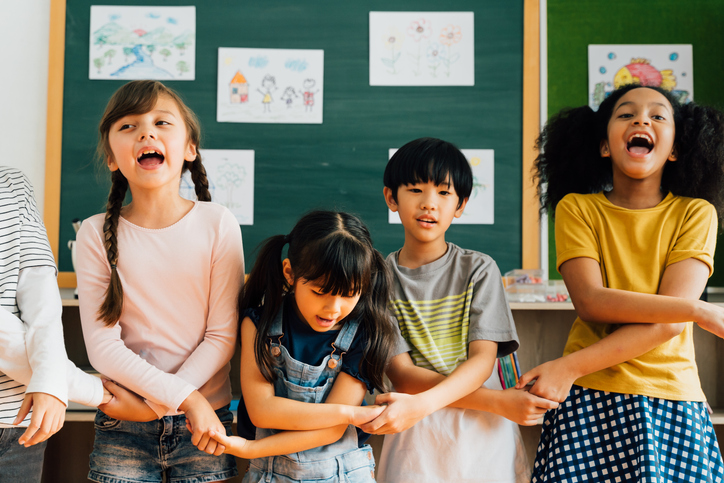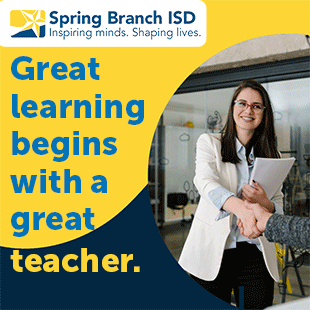

Teaching students social–emotional skills like collaboration, communication, decision-making, and confidence sets them up for success in endless everyday scenarios. These skills especially help students who may have experienced a delay in social and emotional learning during the pandemic.
Students with well-developed social–emotional skills (SEL)1 are more likely to have:
• Increased academic achievement;
• Improved prosocial attitudes and behaviors;
• A greater understanding of themselves and ability to empathize with others;
• Reduced emotional stress.
Students reap the highest rewards when you embed SEL into your curriculum and instruction thoughtfully and intentionally—and not as a standalone lesson or program. SEL empowers all students to learn skills beyond core school subjects to identify their feelings, make empathetic decisions, communicate with others, and build strong relationships. You can implement the following four strategies to create opportunities for SEL in the classroom.
1. Fostering Positive Learner Identity
Learner identity encompasses the habits and attitudes influencing the learning process and how children understand themselves as learners. You help build identities that will serve students positively throughout their educational journeys. When teachers use modeling and classroom activities to invite and encourage students to foster positive learning identities, magic happens. Students grow to become more comfortable:
• Persevering amid challenges and setbacks in the classroom—Students focus on strategies to overcome challenges rather than entering a cycle of negative thinking that undermines their competence. Tell your students it’s okay not to have all the answers. Errors and misunderstandings are part of the learning process for everyone. When students ask for help and persevere during challenges, they embrace learning resiliency.
• Actively engaging in the learning process—Student engagement positively affects their growth across all subjects.2 Engaged students care about what they’re learning. They feel motivated and excited to learn and take ownership of their learning. You can measure engagement through observable behaviors (are students listening attentively, turning homework in on time, and participating in discussions?) or internal states (do students demonstrate curiosity, enthusiasm, and interest?).
• Feeling a sense of agency—Students take leadership roles in their learning and development. For example, offer students the choice of what to read. Give options for tasks or assignments. Small decisions become extremely meaningful as learning tools because they empower students to learn responsibility and cultivate autonomy in positive ways.
When students develop positive learner identities, their self-efficacy and self-esteem increase and they see more success in the classroom.3 You can foster this development by personalizing learning experiences. Educators can use education technology to personalize content and match each student to tasks within their own zone of proximal development—the space between what a student can do without assistance and what a student requires teacher guidance or peer collaboration to complete. Incorporating a “productive struggle” helps students learn to persist in the face of a challenge.
Personalization isn’t just a strategy for giving students access to knowledge—it’s also about giving students access to success and a love of learning. The more often you can turn on light bulbs for students, making them feel like successful learners, the more you’ll see improved academic outcomes and behaviors.
2. Developing Executive Function Skills
Executive function refers to skills like time management, planning, and creative problem-solving that allow students to concentrate, organize, complete tasks, and work toward goals. These skills increase students’ success with academic tasks and assist students in managing other complex life challenges. Learning executive function skills is also a huge step toward maturity for kids.
Executive function skills begin to develop from birth and don’t fully develop until early adulthood, when the brain’s prefrontal cortex reaches maturity. Executive functioning doesn’t refer to a single ability, and skills don’t develop linearly. The major components of executive function, which mature at different rates, include:
• Inhibitory control—An ability to control impulses, like a child staying seated on a rug during story time and focusing on the book a teacher is reading.
• Working memory—A short-term memory that temporarily stores and manipulates information, like learning new routines at the beginning of the school year until the new routines just become habit.
• Cognitive flexibility—The ability to switch between thinking about different topics, like how teachers help students transition from one subject to another throughout the school day.
Environmental factors like early childhood stress resulting from challenging family situations or health issues can hinder the development of executive function.
But executive function skills can improve. Educators can teach executive function skills and create opportunities for students to learn and practice them alone and in group settings.
Post a daily schedule to offer structure to students and help them learn time management, or encourage active listening to help students regulate their impulses to speak when others are talking.
Teaching executive function skills helps students transition toward independence. And these skills don’t just help in school. The executive function skills students learn in the classroom help them succeed outside the school environment and, eventually, beyond graduation as they become productive community members.
3. Introducing Windows and Mirrors
Mirrors enable students to see themselves positively reflected in the content. Students look for people like themselves in the stories they read and feel a better sense of connection to the curriculum when they find relatable characters. Mirrors validate a student’s perspective, supporting their identity and boosting their feelings of self-worth.
Windows are stories and lessons about life from a different perspective unfamiliar to the student. This content gives students exposure and helps them gain more empathy and a deeper understanding and appreciation of others’ experiences and feelings.
In a global community, this windows and mirrors approach reminds students they’re not alone while also teaching tolerance and appreciation for those who are similar to them and different from them. Schools should work together with their staff, parents, and others in the community to choose content best suited to a diverse student population.
4. Modeling Prosocial Behavior
Students learn from watching their parents, other family members, and role models—including teachers. The content you use with students should model prosocial behaviors, like acts of kindness, compassion, empathy, generosity, and honesty.
But understanding and managing emotions poses a challenge for everyone, especially younger students, so model those positive behaviors. When students see you modeling positive relationships and healthy interactions, they’ll begin to emulate those behaviors independently. On top of modeling prosocial behaviors, give students tools to practice and apply those behaviors in the classroom. For example, take the time to teach your class about feelings and emotions. Ensuring your students have the right vocabulary to express themselves helps them better empathize and communicate with others. Through practice and conversations, students learn to act empathetically and improve their self-awareness, self-management, social awareness, relationship skills, and decision-making processes. SEL isn’t limited to a monthly guidance counselor session—this learning happens every minute students are in school. Model SEL skills and remain attentive to your impact on kids during each school day to watch students’ social-emotional development thrive.4 Cultivating SEL builds academic confidence, promotes prosocial behavior, and increases students’ ability to succeed in school and life.
Links
1. www.learninga-z.com/site/resources/breakroom-blog/fostering-social-emotional-learning
2. www.gallup.com/education/267521/focus-student-engagement-better-academic-outcomes.aspx
3. www.ncbi.nlm.nih.gov/pmc/articles/PMC9384863
4. www.learninga-z.com/site/resources/breakroom-blog/social-emotional-learning-guide
Lisa O’Masta is the president of Learning A–Z (www.learninga-z.com), an educational technology company that’s delivering digital learning resources to thousands of teachers and students across the world through its robust technology platform offerings. As an innovative change agent and leader in the K–20 education market, Lisa brings over 20 years of leadership experience in product management, marketing, product development, team development, P&L management, customer experience, and operational excellence to dynamic organizations seeking to change and grow.





